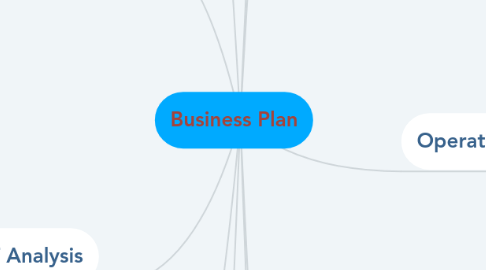Business Plan
Door John Nguyen


1. Marketing Plan
1.1. Market research: Gathering and classifying data about the market the organization is currently in. Examining the market dynamics, patterns, customers, and the current sales volume for the industry as a whole.
1.2. Competition: The marketing plan should identify the organization's competition. The plan should describe how the organization will stick out from its competition and what it will do to become a market leader.
1.3. Market plan strategies: Developing the marketing and promotion strategies that the organization will use. Such strategies may include advertising, direct marketing, training programs, trade shows, website, etc.
1.4. Marketing plan budget: Strategies identified in the marketing plan should be within the budget. Top managers need to revise what they hope to accomplish with the marketing plan, review their current financial situation, and then allocate funding for the marketing plan.
1.5. Marketing goals: The marketing plan should include attainable marketing goals. For example, one goal might be to increase the current client base by 100 over a three-month period
1.6. Monitoring of the marketing plan results: The marketing plan should include the process of analyzing the current position of the organization. The organization needs to identify the strategies that are working and those that are not working.
2. Competitor Analysis
2.1. Define the industry – scope and nature of the industry.
2.2. Determine who the competitors are.
2.3. Determine who the customers are and what benefits they expect.
2.4. Determine the key strengths – for example price, service, convenience, inventory, etc.
2.5. Rank the key success factors by giving each one a weighting – The sum of all the weightings must add up to one.
2.6. Rate each competitor on each of the key success factors.
2.7. Multiply each cell in the matrix by the factor weighting.
3. SWOT Analysis
3.1. Strengths
3.2. Weaknesses
3.3. Opportunities
3.4. Threats
4. Financial Planning
4.1. Assess the business environment
4.2. Confirm the business vision and objectives
4.3. Identify the types of resources needed to achieve these objectives
4.4. Quantify the amount of resource (labor, equipment, materials)
4.5. Calculate the total cost of each type of resource
4.6. Summarize the costs to create a budget
4.7. Identify any risks and issues with the budget set.
5. Excutive Summary
5.1. The business opportunity - describe the need or the opportunity.
5.2. Taking advantage of the opportunity - explain how will your business will serve the market.
5.3. The target market - describe the customer base you will be targeting.
5.4. Business model - describe your products or services and and what will make them appealing to the target market.
5.5. Marketing and sales strategy - briefly outline your plans for marketing your products/services.
5.6. The competition - describe your competition and your strategy for getting market share. What is your competitive advantage, e.g. what will you offer to customers that your competitors cannot?
5.7. Financial analysis - summarize the financial plan including projections for at least the next three years.
5.8. Owners/Staff - describe the owners and the key staff members and the expertise they bring to the venture.
5.9. Implementation plan - outline the schedule for taking your business from the planning stage to opening your doors.
6. Company Background
6.1. People
6.2. Process
6.3. Profit
7. Product Description
7.1. An emotional connection
7.1.1. “Pamper yourself.”
7.1.2. “Comforting.”
7.1.3. “Rich and luxe.”
